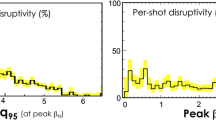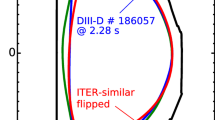Conclusions
In conclusion, the advantages of the D-3He fuel cycle are compelling but the challenges are great. The economics of a fusion power plant with a permanent first wall, especially in terms of availability and reliability, should translate into an attractive future option for society. The safety and environmental features of this type of power could make this energy source irresistible for a world choked by pollution and racked with wars over the remaining scraps of fossil fuel energy. These advantages will not come free; the physics in terms of highernτT, larger plasma currents, ash removal requirements, and the need to use fuel from settlements on the Moon (which should be in place long before we need3He for power reactors) are all problems that need to be solve in the next 20 years. The benefits to mankind surely will overweigh these latter problems and the nation, or nations who develop this energy source will have an important strategic advantage in the twenty-first century.
Similar content being viewed by others
References
G. L. Kulcinski, G. A. Emmert, J. P. Blanchard, L. El-Guebaly, H. Y. Khater, J. F. Santarius, M. E. Sawan, I. N. Sviatoslavsky, L. J. Wittenberg, and R. J. Witt, (1989). Apollo-An advanced fuel fusion power reactor for the 21st century.Fusion Technol. 15, 1233.
G. A. Emmert, G. L. Kulcinski, J. P. Blanchard, L. El-Guebaly, H. Y. Khater, J. F. Santarius, M. E. Sawan, I. N. Sviatoslavsky, L. J. Wittenberg, and R. J. Witt (1989). Apollo L2-An advanced fuel tokamak reactor utilizing direct conversion. Proceedings of 13th Symposium on Fusion Engineering, Knoxville, Tennessee, 1989 (IEEE, 1990), p. 1043.
G. L. Kulcinski, G. A. Emmert, J. P. Blanchard, L. El-Guebaly, H. Y. Khater, C. W. Maynard, I. F. Santarius, M. E. Sawan, I. N. Sviatoslavsky, and L. J. Wittenberg, (1991). Apollo L3-An advanced fuel fusion power reactor utilizing direct and thermal energy conversion.Fusion Technol. 19, 791.
F. Najmabadi,et al. (1991). The ARIES-I Tokamak Study.Fusion Technol. 19, 783.
J. Jacquinot and G. Sadler, (1992). D3He Fusion in JET.Fusion Technol, to be published.
The ARIES-III Tokamak Study. To be published, 1992.
T. C. Simonen (this conference).
C. W. Baker, M. Abdouet al., STARFIRE-A commercial tokamak fusion power plant study. Argonne National Lab Document ANL/FPP-80-1, Sept. 1980.
F. Najmabadiet al., The TITAN reversed-field pinch fusion reactor study; the final report. University of California at Los Angeles Report, UCLA-PPG-1200, 1988.
S. J. Brereton and M. S. Kazimi, Safety and economic comparison of fusion fuel cycles. Massachusetts Institute of Technology Report PFC/RR-87-7, August 1987.
J. F. Santarius, Magnetic fusion energy and space development. Proceedings of 24th Intersociety Energy Conversion Engineering Conference, IEEE, N.Y., IECEE-89, Vol. 5, p. 2525 (1989).
Author information
Authors and Affiliations
Rights and permissions
About this article
Cite this article
Kulcinski, G.L. Lessons learned from recent D-3He tokamak power reactor studies. J Fusion Energ 10, 351–355 (1991). https://doi.org/10.1007/BF01052140
Issue Date:
DOI: https://doi.org/10.1007/BF01052140




